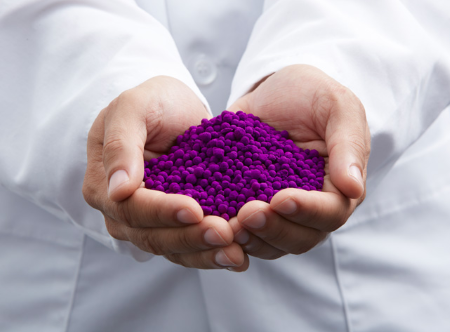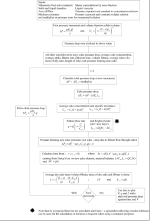Compressible Cake Constant Rate Filtration

Description
Simulation of the batch sedimentation of compressible compacts is also possible using an
appropriately coded computer spreadsheet. The governing equation for this type of sedimentation
is a non-linear parabolic partial differential equation that must be solved by a numerical technique
such as Finite Difference. This has been achieved using a spreadsheet, and examples of how to
use the simulation and the results are provided and compared with data taken during batch
sedimentation of compressible compacts whilst monitoring the local concentration within the
vessel using an electrical conductance technique.
Calculation Reference
Fluid mechanics
Filtration
Chemical Plant Design
In the filtration process, a compressible cake forms when particles in the slurry being filtered accumulate on the filter medium, resulting in a cake with a variable resistance to flow. The resistance of the cake increases as it compresses under the applied pressure. Constant rate filtration is a mode of filtration where the rate of filtrate flow remains constant throughout the process.
For compressible cake constant rate filtration, the rate of filtrate flow (V) is maintained constant, and the pressure drop (?P) across the filter medium and the cake increases over time. The rate of filtrate flow can be described by the modified form of Darcy's law for compressible cakes:
V = (A * ?P) / (? * (R_m + ? * S))
where:
- V = volumetric flow rate of filtrate (m³/s)
- A = filtration area (m²)
- ?P = pressure drop across the filter medium and cake (Pa)
- ? = dynamic viscosity of the filtrate (Pa·s)
- R_m = resistance of the filter medium (m-1)
- ? = specific cake resistance (m/kg), which varies with the applied pressure for compressible cakes
- S = mass of solids per unit area (kg/m²)
In constant rate filtration, V is constant, and the pressure drop (?P) increases with time as the cake compresses. Therefore, the specific cake resistance (?) also changes as a function of pressure or time. A common empirical model used to describe the relationship between ? and ?P is:
? = ?0 * (?P)^(n - 1)
where:
- ?0 = specific cake resistance at a reference pressure (m/kg)
- n = compressibility index, which indicates the extent to which the cake compresses under pressure (dimensionless)
The compressibility index (n) typically ranges from 1 for incompressible cakes to greater than 1 for compressible cakes. For constant rate filtration with a compressible cake, the relationship between filtrate volume (V_f), filtration time (t), and the other process parameters needs to be determined experimentally or using numerical methods. This often involves performing laboratory-scale filtration tests and analyzing the data to determine the appropriate model parameters.
Calculation Preview
Full download access to any calculation is available to users with a paid or awarded subscription (XLC Pro).
Subscriptions are free to contributors to the site, alternatively they can be purchased.
Click here for information on subscriptions.



